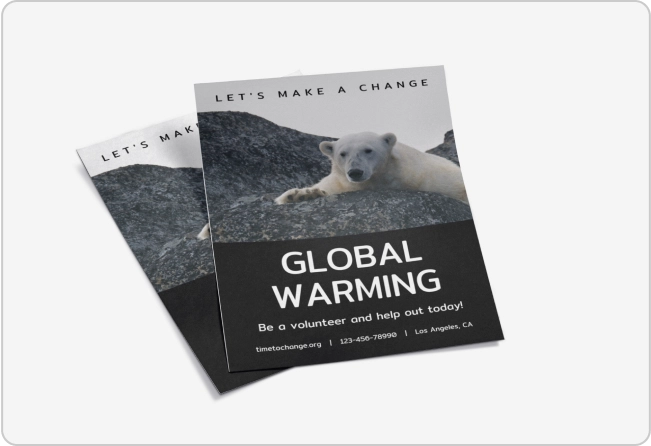Cinematic Creations: Unleashing the Power of AI in Movie Poster Design
Cinematic Creations: Unleashing the Power of AI in Movie Poster Design
Blog Article

In the ever-evolving landscape of film marketing, the visuals that accompany a movie can make or break its success. Movie posters serve as the first impression, enticing audiences with a glimpse of the story and the emotions that lie within. As technology advances, filmmakers and designers are seeking innovative tools to elevate their promotional materials. One of the most exciting developments in this realm is the emergence of AI movie poster generators, which are transforming the way we conceptualize and create these captivating images.
AI-powered tools are revolutionizing the creative process by harnessing the capabilities of machine learning and data analysis. These sophisticated generators can produce stunning, unique designs in a fraction of the time it traditionally takes. By analyzing existing movie posters and understanding design elements, colors, and styles, these AI systems can suggest and generate posters that are not only visually appealing but also aligned with current trends. The potential of such technology is vast, offering filmmakers a new avenue to explore their artistic visions while capturing the attention of audiences worldwide.
The Evolution of Movie Posters
The history of movie posters dates back to the early days of cinema when silent films relied heavily on painted artwork to attract audiences. These posters often featured striking illustrations that conveyed the essence of the film, drawing in viewers with vibrant colors and dramatic scenes. As film transitioned into the sound era, the design of posters evolved, incorporating photography and more sophisticated graphic techniques. This shift not only enhanced visual appeal but also allowed for a deeper narrative connection through imagery.
With the rise of blockbuster films in the 1970s and 1980s, movie posters became an integral part of film marketing. Iconic designs emerged that have since become emblematic of their respective films. The use of bold typography, dynamic compositions, and the careful selection of color palettes helped to establish a recognizable style that became synonymous with the film's identity. This period marked a golden age for poster art, with talented designers crafting pieces that not only promoted films but also functioned as collectible art.
In recent years, the advent of digital technology and artificial intelligence has transformed the landscape of movie poster design. AI movie poster generators have emerged as innovative tools that streamline the creative process, offering filmmakers and marketers the ability to create visually stunning posters quickly and efficiently. These tools harness vast datasets of existing artwork and design trends, enabling the generation of unique and captivating visuals that resonate with targeted audiences. As a result, the traditional roles of artists and designers are evolving, leading to new collaborative opportunities between human creativity and machine learning.
AI Technologies Transforming Design
The rise of artificial intelligence has significantly impacted various creative fields, with movie poster design being a notable example. AI movie poster generators employ machine learning algorithms to analyze existing designs and trends, allowing for the creation of visually striking posters that resonate with target audiences. By harnessing vast databases of imagery and style elements, these tools can produce unique visual representations tailored to specific themes and genres, making the design process more efficient and innovative.
Furthermore, AI technologies facilitate experimentation in design. Designers can input different parameters and styles into an AI movie poster generator, resulting in diverse iterations of a single concept. This adaptability encourages creativity, enabling artists to explore combinations and visual motifs that they may not have considered otherwise. The instant feedback loop provided by AI allows for rapid adjustments and refinements, streamlining the workflow in a traditionally labor-intensive area of design.
Lastly, the accessibility of AI movie poster generators empowers independent filmmakers and smaller production companies. With limited budgets and resources, these creators can utilize AI tools to generate high-quality posters that capture the essence of their films. By lowering the barrier to entry for professional-level design, AI is democratizing the creative process, ensuring that compelling visuals are no longer exclusive to major studios, but available to all storytellers looking to market their cinematic visions.
Case Studies: Successful AI-Generated Posters
Free movie advertisement poster creator
In recent years, several films have embraced AI movie poster generators to create visually striking promotional material. One notable example is the indie film "Digital Dream," which utilized an AI tool to design its poster. By inputting key themes and visual elements of the film, the creators were able to generate unique artwork that perfectly encapsulated the movie's essence. The final poster featured an abstract blend of colors and shapes, drawing significant attention on social media and contributing to a successful crowdfunding campaign.
Another success story comes from the horror genre, with the release of "Nightmare Realm." The film's marketing team turned to AI to produce a series of posters that would resonate with its target audience. The AI model was trained on existing horror film posters, allowing it to generate designs that were both eerie and compelling. These posters effectively captured the chilling atmosphere of the film, leading to increased anticipation among fans and higher ticket sales during its opening weekend.
Lastly, the animated feature "Whimsical Tales" showed how AI can enhance creativity in poster design. The filmmakers collaborated with an AI generator to create vibrant and playful visuals that reflected the film's light-hearted narrative. By experimenting with various styles and artistic interpretations, the team was able to produce several options and ultimately choose a poster that stood out. This strategic use of AI not only saved time but also sparked new ideas and directions for the film's overall visual identity.
Report this page